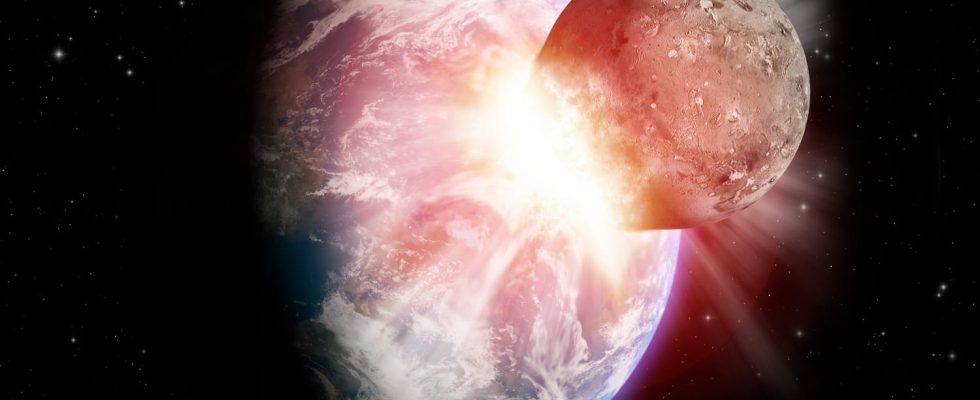A riddle as old as the world may have just been elucidated. While it was thought that the Moon was formed in several years, a new study advances a completely different version…
Where does this star come from that watches over our nights and gives rhythm to our months and our seasons? Studied since the dawn of time, the Moon retains a part of mystery that astronomers have a hard time unraveling. At present, scientists agree that the Moon was formed 4.5 billion years ago as a result of a collision between the Earth and an embryonic planet, a protoplanet, named Theia. Following this violent encounter, the debris expelled during the collision agglomerated for months or even years and finally gave birth to a star evolving in orbit around the Earth: the Moon.
This hypothesis is attractive and constitutes the most coherent explanation available to researchers until very recently. However, it is not entirely unanimous in the scientific community. Indeed, according to this theory, the Moon was formed from a mixture of extremely hot rocks coming mainly from the interior of Theia, pulverized under the shock, and a small portion of debris torn from the Earth by the same occasion. Unfortunately, this hypothesis does not hold water when one is interested in the lunar rocks brought back by the astronauts of the Apollo missions…
Indeed, the scientists who have studied them have realized that the composition of these rocks is very similar to that of the Earth, whereas it should logically be mostly similar to that of Theia. An inconsistency that has been causing trouble for a long time and whose explanation could have been discovered by a team of researchers from NASA and the University of Durham in the United Kingdom…
The express formation of the Moon?
A study published in October 2022 in the journal The Astrophysical Journal Letters sheds new light on this episode. The scientists behind this paper offer a model that the Moon could have formed in just a few hours after impact from debris torn from Earth during the collision.
Finally, the Moon would indeed be made up of rocks pulverized during the meeting between the two stars. But this debris would come mainly from the Earth and very little from the protoplanet Theia which crossed its path as the first theory supposed. This high-temperature debris would have agglomerated in just a few hours and not several years as initially imagined, to form the gray star that we know so well. This hypothesis thus explains why the Moon and the Earth have such similar compositions.
NASA’s next Artemis missions, scheduled from 2024-2025, could be an opportunity to bring back new rock samples taken from deeper in the lunar soil. Astronomers would then be able to confirm or not this hypothesis and thus solve a very old enigma: that of the origin of the Moon!
